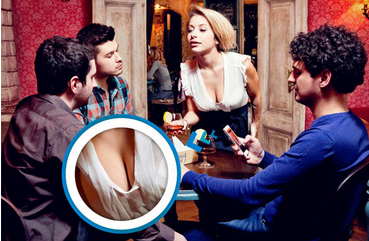Emma Rachel Deane, UK, SSH Blog Correspondent
 Last month 20-year-old Gemma Newitt was left enraged after no charges could be brought against a man who took inappropriate photos of her in a supermarket. CCTV footage from a Co-op store in St Austell, Cornwall shows Karl Leggatt holding his mobile phone inches away from Newitt’s bottom as she browsed the shelves of the store. After the incident was reported to the Store Manager the police were called and Newitt was told that no arrests could be made because Leggatt had not broken any laws.
Last month 20-year-old Gemma Newitt was left enraged after no charges could be brought against a man who took inappropriate photos of her in a supermarket. CCTV footage from a Co-op store in St Austell, Cornwall shows Karl Leggatt holding his mobile phone inches away from Newitt’s bottom as she browsed the shelves of the store. After the incident was reported to the Store Manager the police were called and Newitt was told that no arrests could be made because Leggatt had not broken any laws.
After celebrities including Katy Perry, Paris Hilton and Lindsay Lohan fell victim to an invasive lens, the “upskirt photo” became an all too familiar phrase. Although generally used to refer to an unauthorised photograph under a woman’s skirt, the term is also used in relation to more general voyeuristic photography depicting, almost exclusively, women. Despite the relatively recent phrasing, the interest in creating such images is not a recent occurrence and references in art can be found as early as the 1700s as well as a plethora of pictures created during the pin-up era. The difference between then and now, of course, is the development of technology. Smartphones now make it possible for non-consensual images to be uploaded to the internet and viewed by millions within minutes. There are entire websites dedicated to photographs of women sitting on benches, relaxing in parks and stepping out of cars completely unaware that they are being intimately photographed and posted on an erotica site.
 Last year, despite complaints, crowdfunding site Indiegogo continued raising funds for a smartphone accessory, pitching itself on the ability to take stealthy photos of a woman’s body without her knowledge. The text on the webpage advertised the accessory’s ability to “take pictures round corners” while images used in the marketing focused on discreetly photographed breasts and legs.
Last year, despite complaints, crowdfunding site Indiegogo continued raising funds for a smartphone accessory, pitching itself on the ability to take stealthy photos of a woman’s body without her knowledge. The text on the webpage advertised the accessory’s ability to “take pictures round corners” while images used in the marketing focused on discreetly photographed breasts and legs.
Australia, New Zealand and India are countries that have specific legislation in place to tackle the issue based on a reasonable expectation of privacy but the UK is yet to follow suit. The Sexual Offences Act of 2003 criminalises ‘voyeurism’ in the UK and defines it as recording someone engaging in a private act or installing surveillance equipment in private areas without the knowledge or consent of the victim. This means that because Newitt was shopping in a public place, her body was considered available for public recording. Few countries have tackled the issue head on and created specific legislation for the protection of a woman’s privacy in this modern world of ever developing technology.
The attitude that women’s bodies are publicly owned is ingrained deeply in our society. We see this exhibited in a myriad of ways which each boil down to denying women agency over their own bodies. Restriction to abortion access, slut-shaming, sexual assault and the endless barrage of judgmental appearance based media representation are all displays of entitlement to the female form which promulgate a culture in which Leggatt could think of his actions as reasonable behaviour and stand vindicated by the law.
Emma Rachel Deane is a London-based retail manager for a fast growing women’s lifestyle brand and an outspoken advocate for women’s social justice issues. She can be found blogging on Raging Hag or tweeting @emmaracheldeane.
